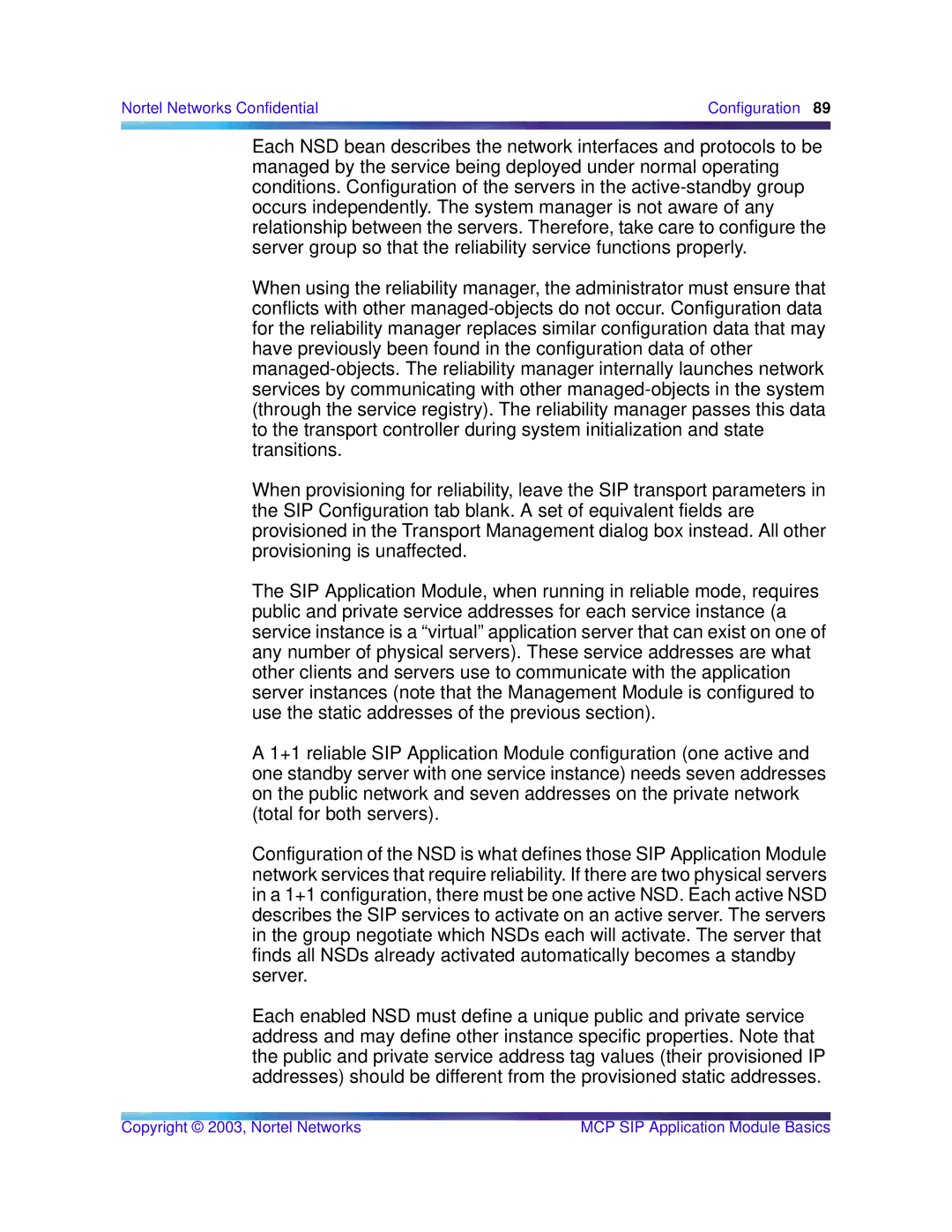
Nortel Networks Confidential | Configuration 89 |
|
|
Each NSD bean describes the network interfaces and protocols to be managed by the service being deployed under normal operating conditions. Configuration of the servers in the
When using the reliability manager, the administrator must ensure that conflicts with other
When provisioning for reliability, leave the SIP transport parameters in the SIP Configuration tab blank. A set of equivalent fields are provisioned in the Transport Management dialog box instead. All other provisioning is unaffected.
The SIP Application Module, when running in reliable mode, requires public and private service addresses for each service instance (a service instance is a “virtual” application server that can exist on one of any number of physical servers). These service addresses are what other clients and servers use to communicate with the application server instances (note that the Management Module is configured to use the static addresses of the previous section).
A 1+1 reliable SIP Application Module configuration (one active and one standby server with one service instance) needs seven addresses on the public network and seven addresses on the private network (total for both servers).
Configuration of the NSD is what defines those SIP Application Module network services that require reliability. If there are two physical servers in a 1+1 configuration, there must be one active NSD. Each active NSD describes the SIP services to activate on an active server. The servers in the group negotiate which NSDs each will activate. The server that finds all NSDs already activated automatically becomes a standby server.
Each enabled NSD must define a unique public and private service address and may define other instance specific properties. Note that the public and private service address tag values (their provisioned IP addresses) should be different from the provisioned static addresses.
Copyright © 2003, Nortel Networks | MCP SIP Application Module Basics |
